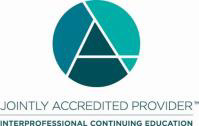WMJ Vol 120: Establishment and Retrospective Analysis of a Pilot Peer Mentorship Program
ABSTRACT
Background: Studies suggest widespread advantages to peer mentoring programs; however, there is minimal data pertaining to medical students mentoring undergraduate students.
Objectives: To determine the feasibility and perceived effectiveness of a medical student-undergraduate student peer mentorship program.
Methods: A needs assessment guided the development of Pre-Med Pair Up, a program connecting medical student mentors from the Medical College of Wisconsin and other US medical schools to undergraduates at Marquette University and the University of Wisconsin-Oshkosh to provide peer mentorship, premedical resources, and global health information. After 6 months, surveys were distributed to 43 premedical and 26 medical students to evaluate the program. Descriptive statistics and Pearson correlations (r) were used to assess the relational strength between program components and student confidence and knowledge.
Results: Eleven undergraduate and 26 medical students completed surveys. Most undergraduates expressed increased confidence in abilities as premedical students associated with program involvement (18.2% great, 27.3% moderate, 45.5% minimal, 9.1% no improvement). Increased confidence was strongly correlated with knowledge of volunteer opportunities (r = 0.887, P < 0.001) and feelings of preparedness for the medical school application process (r = 0.854, P = 0.001) and curriculum (r = 0.871, P < 0.001).
Conclusion: While self-reported confidence improved and overall positive program outcomes were statistically significant, the number of participants was low and the number who completed mid-year surveys was even lower. Therefore, no conclusions about program effectiveness were made. Instead, a lessons-learned approach was used to discuss the pilot development, implementation, and suggestions for future program installment.
Intended Audience
The target audience for this journal-based activity is healthcare providers caring for the people and communities of Wisconsin and beyond.
Learning Objectives
As a result of this journal-based activity, learners will be able to:
- Identify two advantages of peer mentoring for the mentor and two advantages for the mentee.
- Describe why tracking surveys using a numerical system can be beneficial when evaluating a program retrospectively.
- Articulate three activities that may be appealing in future peer mentorship programs to increase student learning.
FACULTY DISCLOSURE
It is the policy of the University of Wisconsin–Madison Interprofessional Continuing Education Partnership (ICEP) to identify, mitigate and disclose all relevant financial relationships with ineligible companies* held by the speakers/presenters, authors, planners, and other persons who may influence content of this accredited continuing education (CE). In addition, speakers, presenters and authors must disclose any planned discussion of unlabeled/unapproved uses of drugs or devices during their presentation.
For this accredited continuing education activity all relevant financial relationships have been mitigated and detailed disclosures are listed below.
| Name of Individual | Individual's Role in Activity | Name of Commercial Interest & | Discussion of |
Alicia C. Arnold, MD | Reviewer | No relevant relationships with ineligible companies to disclose | No |
Terese Bailey, BS | Accreditation Specialist | No relevant relationships with ineligible companies to disclose | No |
William E. Cayley, MD, MDiv | Reviewer | No relevant relationships with ineligible companies to disclose | No |
Erica Chou, MD | Author | No relevant relationships with ineligible companies to disclose | No |
Margaret Gallagher, MD | Author | No relevant relationships with ineligible companies to disclose | No |
| Lawrence Hanrahan, PhD | Reviewer | No relevant relationships with ineligible companies to disclose | No |
| Sara Lauck, MD | Author | No relevant relationships with ineligible companies to disclose | No |
| Alexandria Ponkratz, MD | Author | No relevant relationships with ineligible companies to disclose | No |
| Nicole E. St. Clair, MD | Author | No relevant relationships with ineligible companies to disclose | No |
| Sarina Schrager, MD, MS | Editor | No relevant relationships with ineligible companies to disclose | No |
| Karen Thompson Rodriguez, MD | Author | No relevant relationships with ineligible companies to disclose | No |
Robert Treat, PhD | Author | No relevant relationships with ineligible companies to disclose | No |
*Ineligible companies are those whose primary business is producing, marketing, selling, re-selling, or distributing healthcare products used by or on, patients.
The ACCME does not consider providers of clinical services directly to patients to be commercial interests.
Accreditation
Accreditation Statement
 | In support of improving patient care, this activity has been planned and implemented by the University of Wisconsin–Madison ICEP and the Wisconsin Medical Journal. The University of Wisconsin–Madison ICEP is jointly accredited by the Accreditation Council for Continuing Medical Education (ACCME), the Accreditation Council for Pharmacy Education (ACPE), and the American Nurses Credentialing Center (ANCC), to provide continuing education for the healthcare team. |
Credit Designation Statements
American Medical Association (AMA)
The University of Wisconsin–Madison ICEP designates this journal-based CE activity for a maximum of 1.0 AMA PRA Category 1 Credit™. Physicians should claim only the credit commensurate with the extent of their participation in the activity.
Continuing Education Units
The University of Wisconsin–Madison ICEP, as a member of the University Professional & Continuing Education Association (UPCEA), authorizes this program for 0.1 continuing education units (CEUs) or 1 hour.
Available Credit
- 1.00 AMA PRA Category 1 Credit™
- 1.00 University of Wisconsin–Madison Continuing Education Hours
- 1.00 Approved for AMA PRA Category 1 Credit™
Required Hardware/software
Free, current version of Chrome, Firefox, Safari, or Edge. Some older browsers and Microsoft Internet Explorer could produce error messages or not display the content correctly.
Free, current version of Adobe Acrobat Reader or other .pdf reader.

 Facebook
Facebook X
X LinkedIn
LinkedIn Forward
Forward